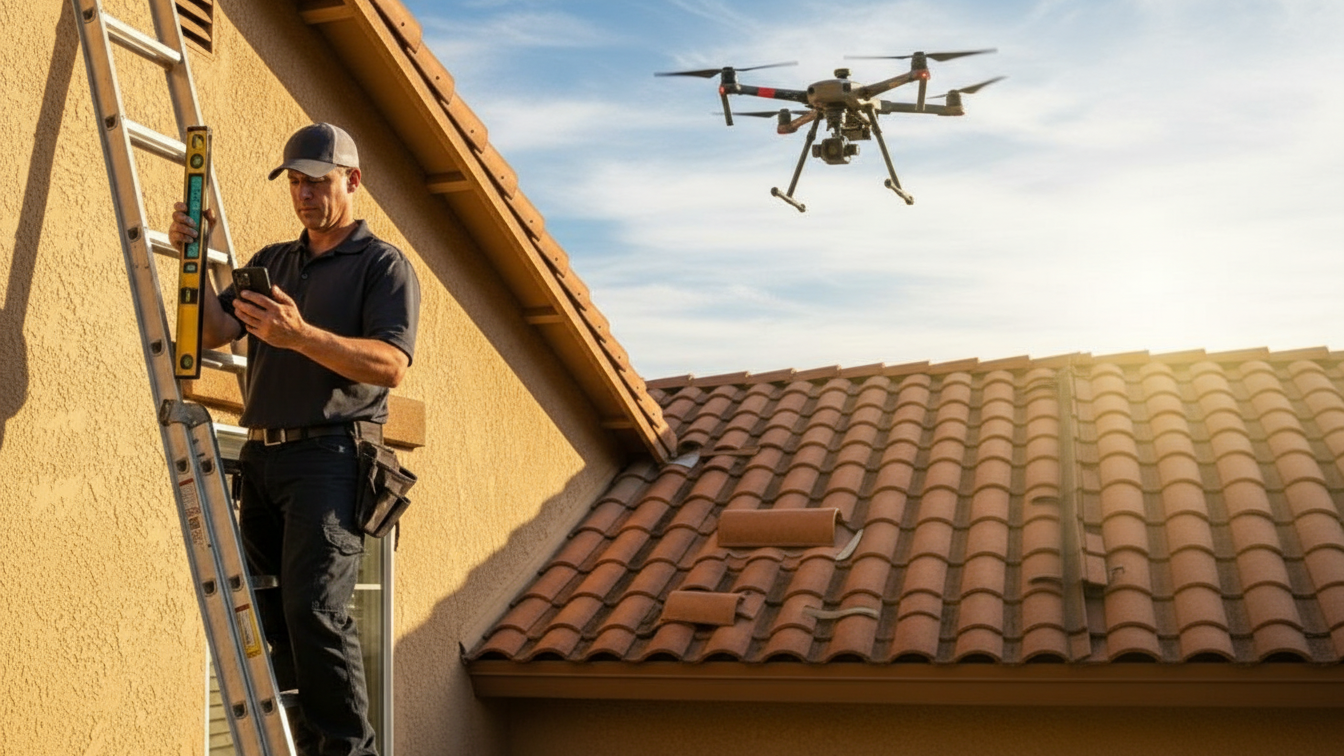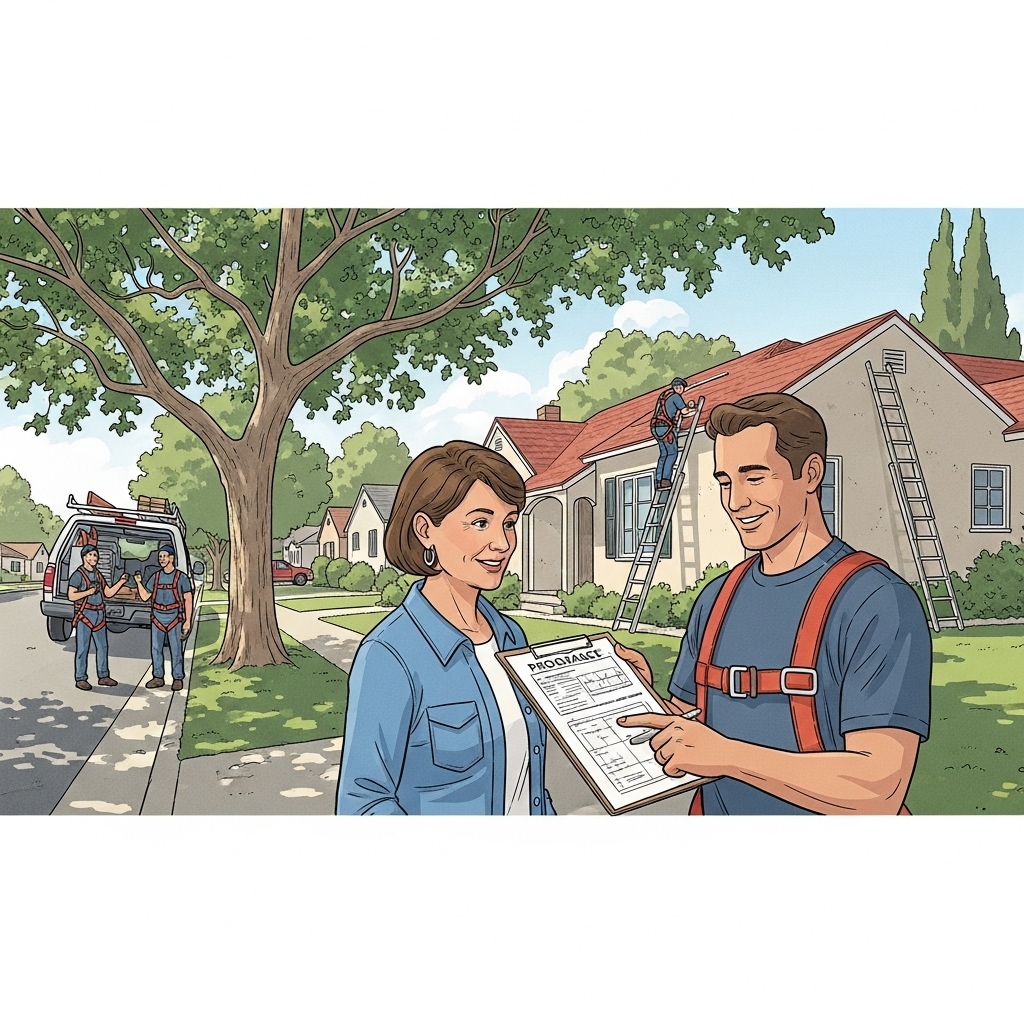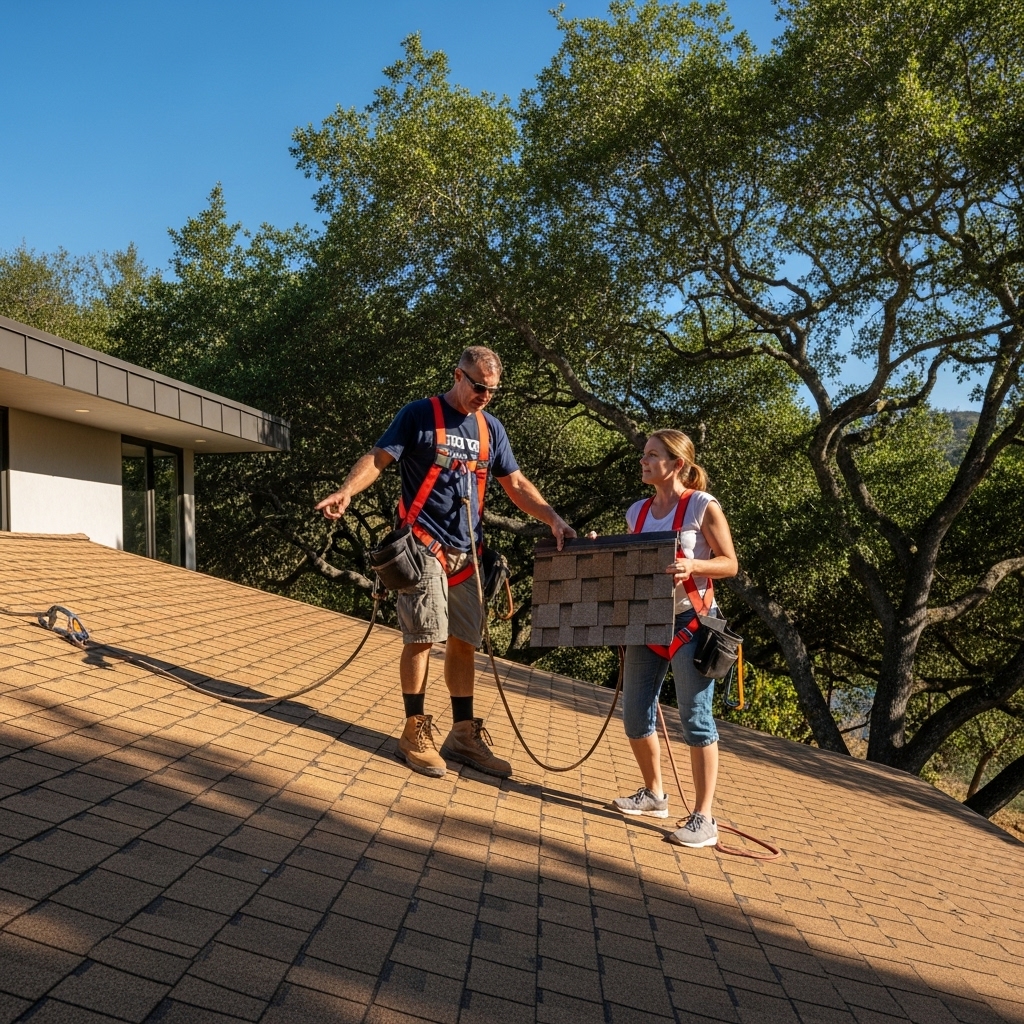Drive through Tarzana on a late afternoon, and you will notice rooflines catching the sun with a subtle, modern sheen. What you are seeing is a quiet shift in the neighborhood, as more homeowners choose metal roofing to handle the Valley’s heat, wind, and dry seasons while elevating curb appeal. These are not the shiny barn roofs of decades past. Today’s metal systems arrive in matte finishes, textured stone-coated profiles, and finely detailed seams that blend into both Spanish-inspired and mid-century homes common across Tarzana. The trends are not just about looks; they reflect thoughtful choices that balance resilience, efficiency, and design.
As someone who regularly works on Tarzana homes, I have watched these trends gain traction because they make daily life easier. Roofs run cooler under the summer sun, solar integrates cleanly, and maintenance becomes predictable. The best part is the versatility: whether you have a hillside lot with tricky wind exposure or a shaded cul-de-sac bungalow, there is a metal profile and assembly that complements your property while adding practical advantages.
Matte and Low-Sheen Finishes Rule
High-gloss finishes have given way to refined matte and low-sheen coatings. In Tarzana’s bright light, these finishes reduce glare, soften the roof’s presence, and read as premium without calling attention to themselves. The effect is especially handsome on standing seam profiles where the planar surface and crisp seams create a tailored look. Earth tones, cool grays, and desaturated greens and blues are popular because they sit comfortably alongside drought-tolerant landscapes and the neutral paints favored in recent exterior renovations.
These finishes are not just aesthetic choices; they are engineered for UV resistance and color stability. In a sunny climate, the ability to resist chalking and fading is part of the long-term trend toward roofs that age gracefully. Homeowners want a roof that looks as intentional in year ten as it did on installation day, and modern coatings deliver on that expectation.
Stone-Coated Steel That Honors Tradition
Tarzana’s Spanish and Mediterranean influences run deep, and many homeowners still prefer the silhouette of barrel tile. Stone-coated steel tile profiles answer that preference while addressing two local realities: fire and weight. They capture the classic look with a fraction of the load, which benefits older framing and seismic performance, and they deliver the non-combustible resilience homeowners want during dry, windy seasons. The surface texture mutes reflections and adds a tactile quality that reads authentically traditional from the street, even though the system underneath is thoroughly modern.
Beyond aesthetics and safety, stone-coated steel brings practical advantages in maintenance. Interlocking shapes and concealed fasteners help keep water on the right paths, while valleys and hips are detailed with purpose-built accessories that integrate seamlessly. For neighborhoods where HOA guidelines emphasize a traditional look, these profiles often satisfy both the spirit and letter of those standards.
Standing Seam for Clean Lines and Solar Readiness
Standing seam metal roofing has become a favorite across contemporary and mid-century streets in Tarzana. The long, uninterrupted lines emphasize architecture and create a compositional calm, especially on low-slope roofs that are difficult to detail elegantly in other materials. These systems are also solar-friendly, allowing arrays to clamp to seams without penetrating the roof surface. That means a tidier installation, fewer potential leak points, and a smoother path to future upgrades.
Hidden fasteners and high-temperature underlayment round out the package. The result is a roof built to ride out Santa Ana winds and scorching summer days while maintaining a minimal, tailored appearance. When homeowners talk about wanting a roof that looks “finished,” they are often responding to the quiet confidence of a well-executed standing seam.
Cool Roof Technology Becomes Standard
In Tarzana, cool roof technology has moved from optional upgrade to expected baseline. Reflective pigments and high-emittance finishes are now embedded in many products, whether you choose panels or stone-coated profiles. Combined with ventilated assemblies and occasional use of battens that create an air gap, these roofs run measurably cooler. That performance is not just about energy savings; it translates into everyday comfort in rooms directly beneath the roof deck, which historically have been the hottest spaces in a Tarzana home.
Homeowners increasingly pair cool roof systems with improved attic ventilation strategy—continuous ridge vents, unobstructed soffit intake, and mindful air pathways across truss bays. The result is an integrated approach that keeps heat moving out rather than building up, even on still, cloudless afternoons when the Valley feels like an oven.
Fire-Smart Details and Ember-Resistant Venting
Another trend reflects a sober reality: wildfire awareness. Metal roofing provides a non-combustible shield at the top of the house. Homeowners are now emphasizing ember-resistant venting at eaves and ridges, boxed-in eave details with non-combustible materials, and meticulous edge treatments that limit ember intrusion. These details used to be specialist knowledge; now, they are part of mainstream conversations in Tarzana, especially in hillside neighborhoods where gusts can carry debris and embers during the driest weeks of the year.
Valley homeowners also pay attention to perimeter conditions—keeping roof edges clean, integrating gutter screens that shrug off leaves and needles, and shaping diverters in strategic spots where wind-driven rain commonly intrudes. A fire-smart roof is also a water-smart roof, and the best trend is seeing these ideas applied together in a single, coherent plan.
Integrated Design: Roof as a Coordinated System
The modern trend is to treat the roof as a system rather than a stack of parts. Underlayment is selected for high-temperature durability, especially in sun-exposed zones. Flashings are engineered, not improvised, with purpose-built components at skylights, chimneys, and wall intersections. Where roofs meet walls or parapets, homeowners are opting for clean counter-flashings and neatly formed kick-outs that keep water traveling where it belongs. Even color-matched trim pieces are becoming the norm, so the final result reads as one design, not a patchwork.
This system thinking extends to ventilation and insulation. In vaulted spaces where attic ventilation is not practical, unvented assemblies with continuous insulation above the deck can work beautifully under metal roofing, provided the build-up includes a thermal break and vapor-smart layers. The result is a roof that looks sharp, runs cool, and keeps the interior environment steady.
Accessory Structures and ADUs Get the Same Treatment
As ADUs and studio spaces pop up behind Tarzana homes, owners are choosing to match the main home’s roof with metal on these structures as well. The look is cohesive from the street and yard, and the performance is equally compelling: cooler interiors, easier solar integration, and a resilient exterior that shrugs off wind and sun. This trend is particularly strong on properties where outdoor spaces flow between the main home and ADU; a unified roof aesthetic ties the whole composition together.
Because these smaller buildings often see varied use—from home offices to guest suites—they benefit from the stability of a reflective, well-ventilated metal roof. They are comfortable for workdays and restful for overnights, with fewer hot spots and a consistent feel through long afternoons.
Mid-Project Adaptability and Future-Proofing
Homeowners are increasingly prioritizing serviceability. Metal roofs make it relatively straightforward to add elements later—an extra vent, a new skylight, or a solar array—when designed with that flexibility in mind. Standing seam panels can be carefully removed and replaced if needed, and stone-coated systems include accessory components that maintain moisture control as elements are added. This adaptability reduces the stress of committing to every decision on day one and aligns with how families actually live and evolve in their homes.
Planning for future upgrades also dovetails with smart wiring routes, dedicated pathways for solar conductors, and accessible junction points. These small decisions now make tomorrow’s enhancements easier, preventing the roof from becoming a barrier to the next chapter of your home’s story.
Clean Lines Meet Landscape and Lighting
Another design-forward trend is coordinating roof lines with exterior lighting and xeriscape. Matte standing seam roofs subtly reflect evening light, creating gentle highlights along the seams that pair well with pathway lighting and warm-toned stucco. Stone-coated tiles interlock with textured shadows that glow at sunset and soften under morning haze. By tying roof aesthetics to landscape and illumination, homeowners are composing exteriors that feel finished and inviting at all hours, not just under midday sun.
In backyards, patio covers and pergolas are increasingly roofed with metal to match the house. This not only ties outdoor rooms into the design but also keeps these spaces cooler. The continuity makes weekends in the yard more enjoyable and visually coherent, a small but meaningful lifestyle upgrade.
The Middle Ground: Choosing Profiles and Coatings
For many Tarzana homeowners, the deciding moment comes down to a side-by-side comparison of sample panels. This is where finish quality, profile depth, and seam details become tangible. Feel the texture of stone-coated steel, compare the crispness of standing seam lock-forms, and hold colors against your stucco or siding. Ask about high-temperature underlayment and the specific ventilation strategy planned for your roof shape. If solar is on the horizon, discuss racking methods and wire management right now. These practical conversations, often guided by experienced metal roofing services, ensure trend-forward choices also deliver long-term performance.
Frequently Asked Questions
Will a matte standing seam roof glare in Tarzana’s sun? Matte and low-sheen finishes are specifically designed to reduce glare. They create a soft, refined appearance that complements bright conditions without harsh reflections, which is one reason they are so popular locally.
Can stone-coated steel really pass for traditional tile? Yes. Quality profiles mimic barrel shapes and shadow lines convincingly, while their textured surfaces enhance authenticity. From the street, most people see a cohesive, classic roof that happens to be lighter and more fire-resilient.
Are metal roofs too modern for older homes? Not at all. The breadth of profiles—from tile look-alikes to subtle shakes and classic seams—means metal can either preserve a traditional style or sharpen a rustic-modern aesthetic. The key is choosing colors and trims that harmonize with existing materials.
How do these roofs stay cool in our climate? Reflective pigments and high-emittance coatings, combined with ventilated assemblies and occasional use of battens to create an air gap, keep roof temperatures lower. This helps stabilize interior comfort, especially in rooms right under the roof deck.
What about wind and wildfire concerns? Interlocking panels, secure seams, and non-combustible materials create a protective roof assembly that aligns with Tarzana’s wind patterns and ember exposure. Embers are addressed with smart venting and edge details that minimize intrusion.
Is it easy to add solar later? Standing seam roofs are particularly adaptable, allowing clamp-on racking with no new penetrations. Other profiles can accept purpose-built mounts and flashing kits. Plan routing and attachment points during the roofing project to make later solar integration a breeze.
How much maintenance do these systems need? Routine rinsing, gutter care, and occasional inspections at flashings are typically sufficient. If exposed fasteners are part of your chosen system, periodic checks keep everything tight and weather-ready.
Can I match my ADU’s roof to the main home? Absolutely. Many homeowners are using the same metal profile and color across the main home, garage, and ADU for a unified look and consistent performance in all structures.
Do metal roofs feel noisy in the rain? With modern underlayments and standard attic insulation, rain noise is usually comparable to other materials. Many residents describe the sound as a soft hush that enhances, rather than disrupts, the ambiance.
Will a metal roof work on a complex roofline? Yes. Metal is highly adaptable with purpose-built accessories for valleys, hips, skylights, and wall intersections. Skilled detailing keeps water on predictable paths and maintains the clean lines that are central to current trends.
If you are ready to explore finishes, profiles, and details that make your Tarzana home feel cooler, quieter, and more composed, now is the ideal time to see samples and map out a plan. Schedule a consultation to align design and performance, and take the next step toward metal roof installation that brings the best of current trends to your own roofline.






